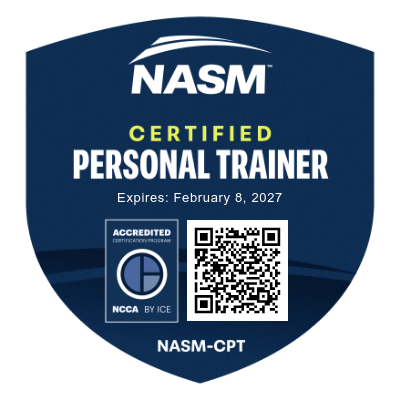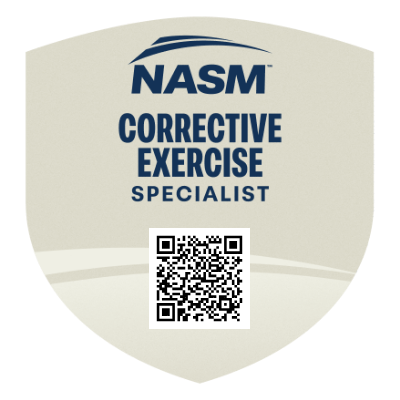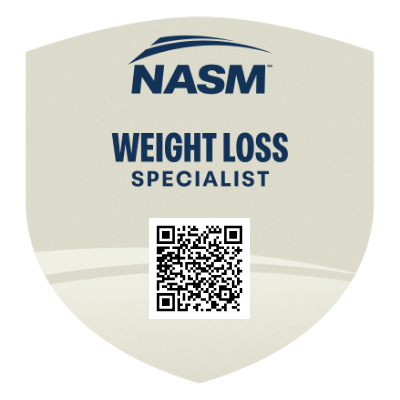Strength Starts Here
Starting a fitness routine or healthy eating plan...
GLP-1 medications are helping women lose weight and...
It’s a super common fear, but the truth is, losing weight without preserving muscle can lead to weakness, fatigue, and a slower metabolism. Strength training helps your body stay toned, firm, and strong, even while the number on the scale might fluctuate slightly. What matters most is protecting your lean mass and moving better for life. The scale is just one measure of progress (often not the most helpful one!).
Yes, but go slow, especially in the first few weeks. You don’t need to push yourself, but gentle movement can actually help you feel better sooner. Many people feel tired, dizzy, or nauseous when starting GLP-1 medications like Ozempic, so it’s okay to take it easy while easing into light movement. Walking, stretching, or short strength sessions are great ways to support your body without going overboard. You don’t need to “earn” your workout, it can simply be about feeling steady, strong, and capable in your own time.
GLP-1s lower your appetite, which can lead to weight loss, but if you’re not careful, it can also lead to muscle loss. Muscles are not just important for appearance; they are key to keeping your metabolism working efficiently, your energy steady, and your body feeling strong and capable. Even light strength-based movement (bodyweight, bands, or light dumbbells) can help you hold onto muscle as your weight changes. This protects your long-term results and helps you feel stronger, not weaker, as your body transforms.
Not necessarily. Some people choose to stay on GLP-1s long term, especially if they have conditions like type 2 diabetes or strong struggles with appetite regulation. Others work with their doctor to come off the medication and maintain progress with lifestyle changes like strength training, mindful eating, and consistent habits. There’s no one-size-fits-all answer, it’s a personal decision best made with your healthcare team.
Whatever path you choose, having support during and after medication can make a big difference in keeping your progress strong and sustainable.
Everyone responds differently to GLP-1s. Some people feel full all the time. Others still think about food a lot, especially if eating used to be a way to deal with stress, boredom, or emotions. GLP-1s work on hunger, not habits. If you notice old patterns showing up, that’s a great place for coaching and self-reflection, not shame.
Like any medication, GLP-1s can come with side effects, nausea, fatigue, constipation, or changes in appetite. Some people also experience emotional shifts, especially if food used to be a big source of comfort. The key is learning how to support your body with smart fueling, hydration, and gentle movement. If anything feels off, it’s important to check in with your healthcare provider.
So far, studies show that semaglutide and other GLP-1/GIPs are safe for many people to use long term, especially those with type 2 diabetes or other health conditions. But "long-term" safety is still being studied, especially for people using it purely for weight loss. That’s why combining medication with sustainable lifestyle changes is the most powerful, protective approach, one that works whether you stay on it or not. Whatever path you choose, having support during and after medication can make a big difference in keeping your progress strong and sustainable.
It’s possible, but not guaranteed. Some people regain weight after stopping GLP-1s, especially if they haven’t built habits to support their progress. That’s why it’s so important to focus on strength training, balanced nutrition, and lifestyle changes while you're still on the medication. These tools help your body and brain adjust, so you’re not starting from zero if or when you stop.
GLP-1s may help some people with Polycystic Ovary Syndrome (PCOS) by improving insulin resistance, helping with weight loss, and reducing cravings, possibly making PCOS symptoms more manageable. PCOS is a hormone condition that can make it harder to lose weight, regulate periods, or control blood sugar. While GLP-1s aren’t a cure for these challenges, they’re being used more often to help, especially when paired with healthy habits. Always talk to your doctor to see if it’s the right fit for you.
Proudly certified by NASM with an NCCA-accredited CPT credential that meets the gold standard in fitness training. | ISSA Certified Pilates Instructor






Proudly certified by NASM with an NCCA-accredited CPT credential that meets the gold standard in fitness training. | ISSA Certified Pilates Instructor


This waitlist doesn’t go into a black hole. I personally review every name on this list and reach out when new spaces open up.
Before we book anything, I’d love to hear your story. Every woman’s GLP-1 path is unique, and this form gives me a sense of what matters most to you right now. From there, I’ll follow up personally so we can decide together what feels best next.
Best value — One-Time Payment — $35/Session — 30-day money-back guarantee
$40/session — Flexible Plan
Best value — One-Time Payment — $35/Session — 30-day money-back guarantee
$40/session — Flexible Plan
This scholarship is for women who are ready to invest in their health—but need a little support to make it happen. I offer a limited number of reduced-rate spots each quarter to help ease the financial burden that can come with GLP-1 medications and other medical costs.
This isn’t about proving you’re “struggling enough.” It’s about honesty, readiness, and showing up for yourself. If you’re motivated to make a change and just need a boost to get started, I’d love to hear your story.
A few things to know before applying:
Let’s find out if this is a fit for you.
